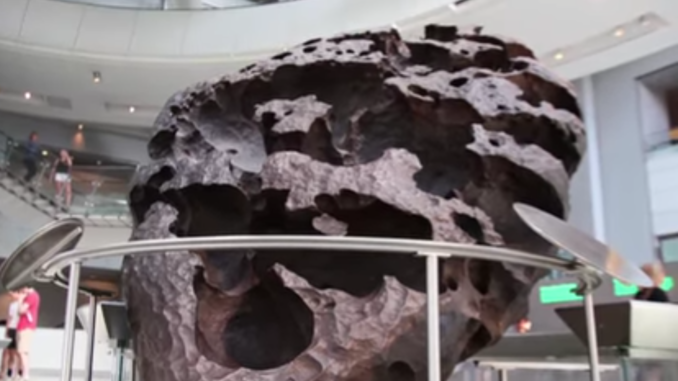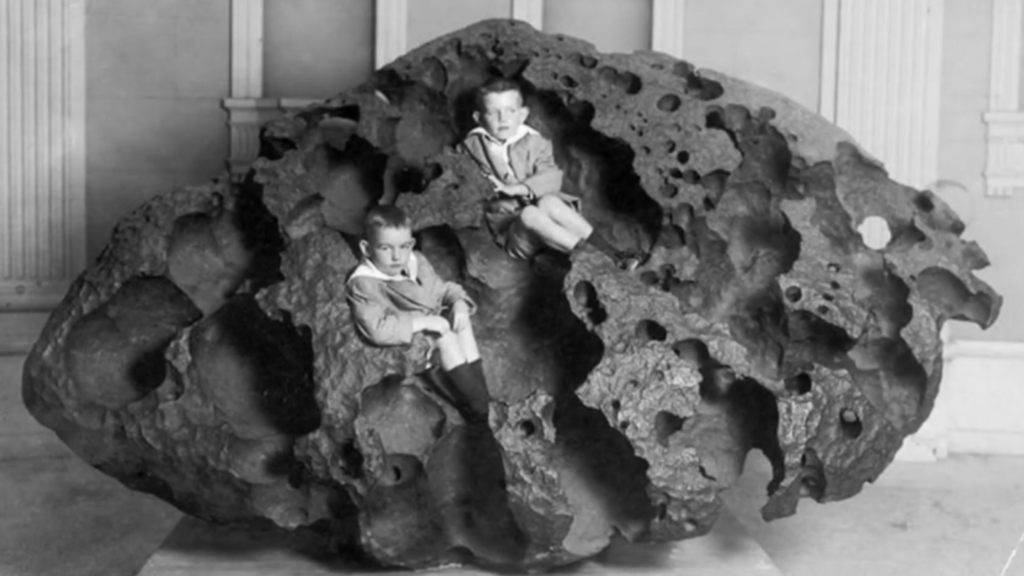
For hundreds of years the Clackamas, who lived in what is now known as the Willamette Valley in Oregon, held in reverant esteem an exceptionally unusual rock that they called Tomanowos. The name meant “heavenly visitor” in their native language – a language that unfortunately no one can speak anymore.
In geological terms the rock was ‘erratic’, meaning it didn’t originate where it was found. Mysteriously, the Clackamas tribe knew Tomanowos came from far away. They believed it had been sent there to unite their people with the Earth, water, and heaven. How they knew Tomanowos was an actual visitor from the heavens is anyone’s guess.
Tomanowos had indeed come from very far away to find its resting place with the Clackamas. It spent billions of years hurtling around the galaxy before finding Earth. For the final several thousand years, and the last several hundred miles of its very long journey to the Willamette Valley, it was first ice-borne then water-borne.
Billions of years ago an old star somewhere in our galaxy went supernova, exploding in a spectacular fashion as stars often do at the end of their lives. The core of these old stars is full of iron, nickel, and a smaller amount of other material, such as gallium and germanium. These are precisely the elements that compose Tomanowos. The supernova left behind an enormous nebula, i.e., a cloud of these materials. Over eons, gravitational force caused this dusty cloud to form a new star system, which included protoplanets.
Probably about 4.5 billion years ago, scientists theorize that a violent collision between two of these protoplanets tore them apart, sending countless meteoroids – pieces of the protoplanets – spinning off into space. One of these rocks was Tomanowos. After a few billion more years of wandering in space, it made a fiery entry into the Earth’s atmosphere and came to rest on the ice cap covering Canada during the last ice age.
No longer space-borne, Tomanowos was now ice-borne and moving southward at a glacial pace. Eventually the ice flow carried the meteorite to the vicinity of Lake Missoula. That’s the same glacier lake that the Owl told you about two weeks ago, the one that caused the Missoula floods which carved out the Channeled Scablands in eastern Washington State. During one of those monster floods, a chunk of glacier ice with Tomanowos embedded in it was washed hundreds of miles to the southwest, following the Columbia River to what is now Portland, Oregon. From there the meteorite rafted on the flood waters southward along what is now called the Willamette River where the melting ice released its captive meteorite. Tomanowos sank beneath the floodwaters to wait several thousand years for the Clackamas to find it. During that time, rain water precipitated (no pun intended) a chemical reaction with the iron sulfide inherent in the meteorite. This reaction created sulfuric acid, which ate away holes in the rock, giving it a swiss cheese appearance.
By 1902, the land that the meteorite lay on was owned by the Oregon Iron and Steel Company, which apparently didn’t know they had the largest meteorite ever found in America. A local man by the name of Ellis Hughes, who owned property about 3/4 mile away, recognized what Tomanowos was and absconded with it. It took him three months to move the (thought to be at the time) 15 ton rock to his home, where he began charging admission to see the rock from outer space. Of course, Oregon Iron and Steel found out that he’d stolen it from them and sued. They were eventually awarded the rock by the Oregon Supreme Court.
Tomanowos was sold to a wealthy patron in 1905 and moved to Portland where it was exhibited at the Lewis and Clark Centennial Exposition. In 1906 it was donated to the American Museum of Natural History in New York City.

The Clackamas are now members of the Confederated Tribes of the Grand Ronde Community of Oregon (CTGRC). The CTGRC wished to have Tomanowos returned to them in 1999 under the Native American Graves Protection and Repatriation Act, but the museum sued. An agreement was worked out, allowing the museum to hold on to the Willamette Meteorite (as they call it) so long as they continue to exhibit it. In exchange, the CTGRC may come once a year to hold a private ceremony with Tomanowos.
Nation’s Largest Meteroite (2:07):
The Missoula floods brought many erratic rocks to the Willamette Valley. Tomanowos travelled the furthest.
Question of the night: Name your dream machine… sports car, luxury car, SUV, or truck?
